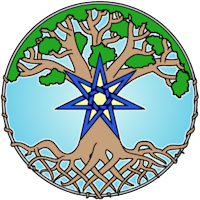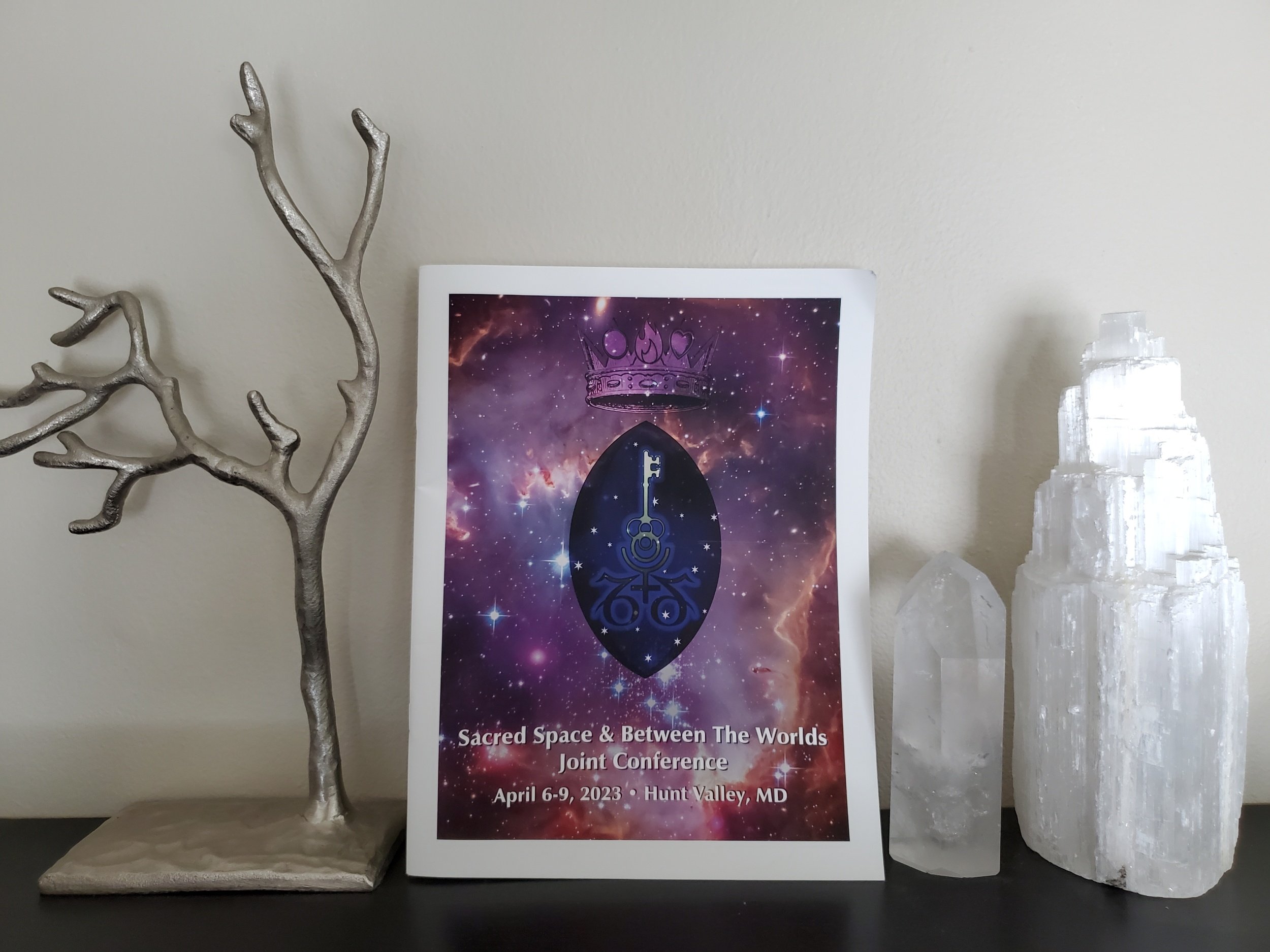As I told several people over the course of the weekend, I’m pretty sure we’d bought these tickets in 2019. The last time we attended was in 2017, I believe – and I was pregnant at the time. When I heard that a Between the Worlds was planned, I felt an inexplicable but undeniable draw to be there, despite the difficulties of parenting a small child and dealing with worsening chronic illness symptoms. We decided we’d find a way, and we made plans to be in Hunt Valley in early 2020.
And then, well. The coronavirus had other ideas.
The conference was postponed, new dates were publicized… and then it was postponed again. And again.
And last weekend, when it finally happened, we were there. Not without issues: we had to bring one of our rabbits with to do twice-a-day nebulizer treatments, and on Thursday there was only one room with working air conditioning. Luckily more of the conference rooms did for the rest of the weekend, but our guest room did not, so we were happy the weather cooled down enough to allow for open windows to cool the room a bit. Other guests had issues too: we heard about water leaks, 5am fire alarms, rooms that hadn’t been cleaned properly. Diana Paxson had to cancel at the last minute due to a family emergency. Orion Foxwood was late to his first workshop, and Dr. Beverly Smith missed her first one, probably due to airport and traffic issues. And those are just the issues I know about!
But despite all of that, the repeated chorus of the weekend was that we were all so happy to be back, to be in community again, to be learning and growing and doing important ritual work. I saw many people I haven’t seen in a long while, and met a few new folks, too.
I came home with several pages of notes, a couple of new books, and memories of three important rituals, all important for different personal reasons. The first one was Gwendolyn Reece’s Ritual for “Dissipating the Glamour that Mistakes Outrage for Action”, which began with a short talk and discussion defining this illusion and how it functions to keep us from taking action against that which outrages us, so as to better identify our target. It was a successor to another ritual she led at a previous conference, on dispelling the glamour of cynicism as a trait of intelligent people, which is another illusion that prevents people from taking action and using what power they do have, however limited that may be. Gwendolyn also spoke again of her views on what she terms humanity’s initiatory challenge, which informs my own thinking about “Tower Time” / “The Storm” / the current “Great War” (which as Seo Helrune has pointed out is perhaps not the best term, but I don’t think anyone’s coined anything better for that particular aspect).
The second ritual was the Between the Worlds main ritual. Every main ritual at a Between the Worlds conference builds upon and continues the work of the previous rituals, and I believe it was this ritual that was tugging at me back in 2019. It is difficult to explain to people who haven’t experienced one, what it’s like to take part in an elaborate ritual organized by powerful magic workers, but the energy was palpable, and I got a little bit of personal insight in addition to flowing my own energies into the working itself. The ritual purpose, as explained by the organizers, was: “Together we travel to the crossroads and the center of all things. There we seek guidance and empowerment as we seek to mend the worlds within and without.”
The third ritual, and last chronologically, was the Universal Temple of Spirits ecstatic rite on Saturday evening, concurrent with the Gala which we opted to skip, in favor of the UToS rite. As I first heard the calling to serve Na Morrigna at a previous UToS rite, I wasn’t about to skip it! I had a heartfelt moment with Lugh when one of the attendees was possessed by him, and I supported two friends through their own possessory experiences, but the only other personal thing I got from the ritual was a sense that I should perhaps pursue training as support staff for this and similar rituals. UToS calls them Guardians, and they take care of those who are possessed, both during the experience (making sure they land gently when they fall, making sure the entities possessing them remember dietary restrictions and the like), and afterwards, providing much needed aftercare in the form of snacks and help processing the experience. One of the primary skills for this work is simply noticing when an attendee begins the transition of being possessed, and that’s a sense I have already somewhat developed, in my oracular seidr work and in other ecstatic contexts. What I don’t have is the physical strength to support their physical bodies, but I wonder if that lack is a true obstacle, in a group setting. As long as there are other people with that strength, I imagine teamwork can get the job done. There were several other clear possessions, including a time when Odin showed up in duplicate and then later, not to be outdone, Loki showed up multiply as well, and spent some time having a conversation with themselves, seemingly from several different points in mythic time. Odin and Fenris also conversed at one point, and the room stood still to listen as the Wolf asked for acknowledgement, and the Old Man agreed that he’d done an unkindness, and both seemed to speak of Ragnarok from a place outside it… but then, we were both within and without mythic time in that place. It was theologically complicated, but these situations echoed some of what Loki said at Mystic South last year, and made me wonder about how the gods evolve and change, and what new myths we might have as they continue to show up in our modern world.
I attended several non-ritual workshops, and of those I think my favorite was Ann Gróa’s talk on snakes, serpents, and dragons in historical Nordic thought. I have a snake name-spirit in my indigenous spiritual tradition, and I always like to learn more about the understanding of snakes in all the cultures connected to my personal practices. It’s a very personal thing for me, but at home, a lot of my practice becomes syncretic, as I celebrate things like the equinoxes in a variety of traditions. The autumn equinox in particular is sometimes a week of celebrations: an Álfar blót, the Pleiades cycle Way-Opening, an Ojibwe name-feast, and Rosh Hashanah with my in-laws. It’s a balancing act, to be sure. But the workshop was very enlightening, and I came away with a ream of notes – and a handout that came with a bibliography!
It was slightly surreal being back in that hotel. There was a time that I knew the layout well, knew the names of the rooms, but this year I kept forgetting and had to keep checking the map on the back of the program. Last time I was there, I was pregnant – and this week I’m planning a sixth birthday party. I’m not sure that going back will fit in my budget for next year, but I hope it will. And if not, I will surely be there at the next Between the Worlds joint conference, whenever that will be.

